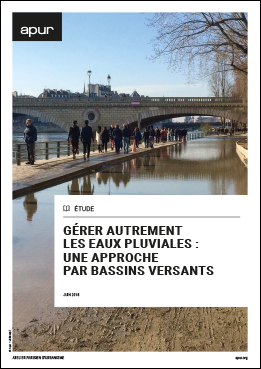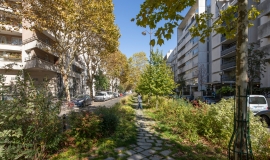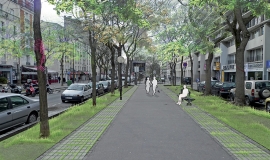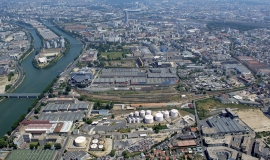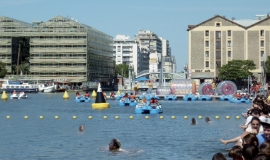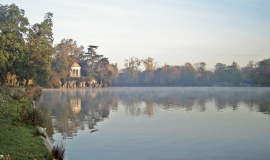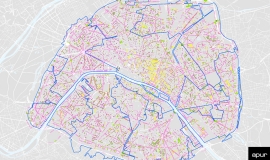A change in the paradigm of rain water management is underway. This provides the opportunity to rethink the role of water when developing the city.
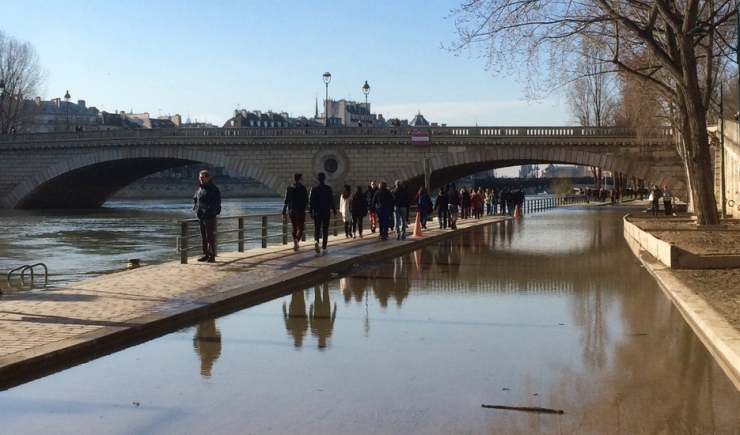
The disturbances linked to rain water incidents (flooding, the pollution of surface water…) raises the question about the resilience of the metropolitan territory and its capacity to adapt. Alongside this, the determination to bring bathing back in the rivers Seine and Marne by 2024 implies instigating initiatives for improving the quality of waterways. Current thought on the issue involves developing water management towards mixed systems which are adapted to the specific needs of each locality.
A vision is gradually emerging that involves local rain water management, as close as possible to where it falls. Each raindrop that doesn’t go down the drain facilitates the treatment of polluted water, reduces the threat of of the system flooding and of the water flowing into rivers. Disconnecting urban surfaces from sewerage systems, through infiltration and other techniques (stocking, use), is therefore a favourable solution for managing rain water.
In this context, Apur has worked on drawing up a method whereby it’s possible to identify the possibilities of disconnecting impermeable surfaces using various catchment areas within the metropolis. The cartographic exploration work, covering six catchment areas at this stage, as well as a tool-kit are available for use by the city’s key players so that local and municipal rain water management can be developed in the urban environment.

